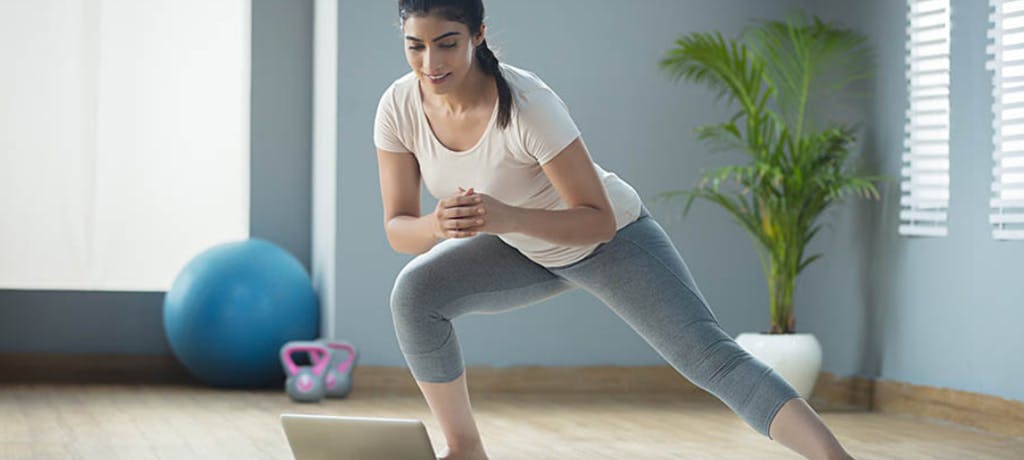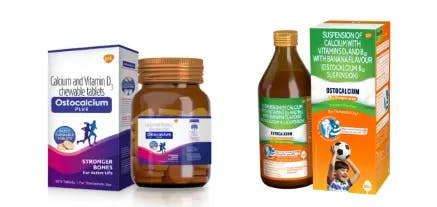Talking about bone health, you can only benefit from being physically active. Important for every age group, exercising might help prevent, delay, and treat osteoporosis. However, the benefits of exercising extend beyond bone health. It can improve muscle strength, coordination, balance, and overall health. It always pays to remember that being physically active is among one of the ways to keep bones healthy. It has to be followed with eating a balanced diet and avoiding risk factors.
Disclaimer: Ostocalcium and GSK neither recommend nor endorse the views expressed by the respective authors regarding the exercises mentioned. Image used for representational purposes only
Physical activity tips for improving bone strength
1. If you stop being active, then your bone mass reverts to the earlier no-exercise level. Alter the variety and forms of exercise to stay motivated.
2. Simply standing does not promote gain in bone strength (bone mass). Gain in bone strength occurs when progressive load is applied3 e.g. slowly increasing the weight used for exercise.
3. Jumping or skipping is much more effective in building bone strength as compared to brisk walking. Five to ten minutes a day should be beneficial.
4. Variety in exercise, such as strength training one day, aerobic exercise another day, is much more beneficial in increasing bone strength (bone mass) when compared to a steady workout, such as only running.
Age-wise physical activity guide for strong bones
Before embarking on a physical activity regimen, please consult your doctor.
1. Children under five years
Running, walking, jumping, and running games2
2. Children and adolescents
Aim: 60 minutes of moderate-intensity activity, preferably daily3. Ball games, such as football and basketball; badminton; skipping; jumping; karate; taekwondo; aerobic dance, jogging, and hiking.
3. Adults
Aim: 30 minutes of moderate-intensity exercise, preferably daily.
Those who can tolerate impact activities such as jumping for 5–10 minutes can begin with it. Recreational activities such as hiking, tennis, and basketball can also be done. Those who can’t tolerate high-impact activities, jogging and stair climbing are the best. In addition, they can try brisk walking, lifting and moving heavy groceries, heavy gardening activity, and cross-training.
4. Older adults with high risk of fractures
Aim: Physical activity on an average of 3 times per week for 30–45 minutes per session. For bone strength and balance in older adults, it should be done for minimum 3 months and continued for lasting benefits3. High-impact strength-training activity: Jogging, stair climbing, aerobic dancing, jumping rope, weightlifting, strength training using bodyweight, and movement exercise such as tai chi2,3. Low-impact weight-bearing activity: Walking, treadmill walking, water aerobics, stair step machines, and low-impact dancing2,3. No impact and nonweight-bearing activity: Yoga, flexibility and stretching exercises, indoor cycling, and pilates2,3.
“You don’t stop exercising because you grow old but you grow old because you stop exercising ”3.
If you have started an exercise regimen, you may feel muscle soreness and discomfort for the initial two days. If not, then you might have exercised hard and might have to ease up1 . It is never too late to take up an exercise regimen, as long as it has been pre-approved by a doctor3.
References
1. National Institute of Arthritis and Musculoskeletal and Skin Diseases. Exercise for Your Bone Health. Available from: https:/ www.bones.nih.gov/health-info/bone/bone-health/exercise/exercise-your-bonehealth#:~:text=The%20best%20bone%20building%20exercises,- Weight%2Dbearing%20and&text=They%20include%20walking%2C%20hiking%2C%20jogging,weights%20%E2%80%93%20can%20also %20strengthen%20bones. Accessed on: 20 August 2020.
2. National Health Services. Exercises for strong bones. Available from: https:/www.nhs.uk/live-well/exercise/exercises-for-strong-bones/. Accessed on: 20 August 2020.
3. Office of the Surgeon General (US). Bone Health and Osteoporosis: A Report of the Surgeon General. Rockville (MD): Office of the Surgeon General (US); 2004. 7, Lifestyle Approaches to Promote Bone Health. Available from: https:/www.ncbi.nlm.nih.gov/books/NBK45523/




